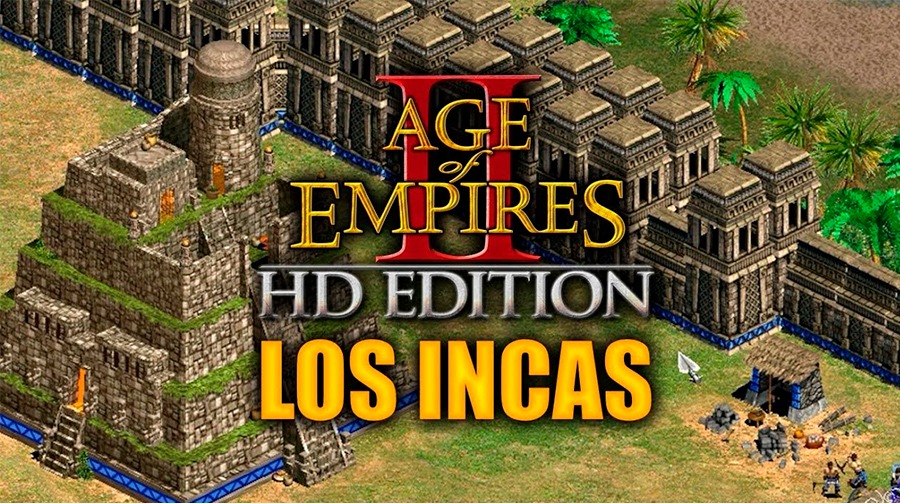Five video games inspired by Peru
Síguenos en:Google News
Peru is an inexhaustible source of creation. Writers, painters, photographers and filmmakers have successively surrendered to the rich history of this country. So have video game developers.
Today, you can travel through the land of the Incas dressed as a ruler of the Tahuantinsuyo, leading your armies. Or embark on an adventure and go deep into the Amazon in search of a sacred chest. Both in virtual mode and in 4K full HD resolution.
Video games offer us an infinite number of alternative universes that allow us escape the daily routine, at least for a while, in these days of compulsory isolation. And the best thing is that you can do it by traveling imaginatively, either in the present or in the past, learning about the secrets of Peru.
Below are some good options to distract your mind, while also appreciating the rich legacy that Peru has left to humanity.
1. The Battle of the Incas
Strategy counts for a lot today, and more so in the world of video games. To prove it, we have the Age of Empires series, a battle game for PCs based on real events that first appeared in 1997, but which has been expanded and even remastered in the last few years.
There are three titles and several versions of the game, but the 2013 one, called Age of Empires II HD: The Forgotten, introduced the Inca civilization into the game, along with the Magyars, Slavs, Indians and Italians.
Since then players can put themselves in the role of the Inca Sapa and face the Spanish empire, just as it happened almost 500 years ago.
A remastered version of Age of Empires II, named Age of Empires II: Definitive Edition, was launched in November last year, with new features, graphics and effects, as well as 4 American civilizations: the Aztecs, Incas, Indians and Mayans.
Assemble your army and launch yourself into this epic adventure! Find out more here.
2. The search for El Dorado
If your thing is more about exploring the Amazon, we suggest you try the Uncharted series, especially the Uncharted: Drake's Fortune series.
This game, in high demand from gamers of all ages, is about the journey of Nathan Drake, the supposed descendant of the English explorer Francis Drake in his search for the lost treasure of El Dorado, with the help of the journalist Elena Fisher and his friend and mentor Victor Sullivan.
The story has elements of reality. Chronicles from the 16th century tell us that Spanish explorers believed in the existence of a country, northeast of the Tahuantinsuyo, where gold and cinnamon, two highly valued commodities at that time, abounded. This was El Dorado, a fictitious place that Francisco de Orellana, discoverer of the Amazon River, sought in vain to find.
Drake's Fortune was well received after its launch and sold more than a million copies in ten weeks. Uncharted created a franchise with several sequels, as well as literature works and a theatrical film adaptation. A version exists for PlayStation 4 as part of the Uncharted:The Nathan Drake Collection series.
Think you know where the El Dorado treasure lies? Get hooked on the game here.
3. An expedition in Vilcabamba
If your console is a PlayStation 1 or 3, relics that many still keep, or a PC, and you like classic games, we suggest you relive the extraordinary adventure of Lara Croft in the first Tomb Raider series.
In this story, one of the oldest in 3D for the 32-bit generation, the British adventurer goes in search of a strange artifact called Scion. The first mission is set in Peru, specifically in the "City of Vilcabamba".
As you know, Vilcabamba is one of the fourteen districts of the province of La Convención, in Cusco. The citadel of Choquequirao is located nearby, a place where the Incas took refuge after the arrival of the Spanish.
Learn more about Lara Croft and her many expeditions here.
4. Machu Picchu at full speed
Who doesn’t remember this other video game classic: Top Gear, launched in 1992 for the Super Nintendo system. In this car racing game, you have to complete a series of increasingly complex circuits in order to win the trophy.
One of the various circuits in particular stands out: Machu Picchu. It is a route full of bends and tunnels that cross the mountains. The cars pass each other in search of first place.
The launch was a real success in its time and marked all millennials forever.
The second installment of the Top Gear 2 game was as successful as the first, and also includes Machu Picchu.
The unmistakable soundtrack gives this game a good dose of adrenaline. If you still have this console, make sure you set out on the winding imaginary track to Machu Picchu, the Capital of the Inca Empire.
Here is a sequence of the race as it passes through Brazil, Peru and Mexico.
5. The Talara lighthouse
Back in the 21st century, in 2005, Ubisoft Montreal and Ubisoft Milan launched Tom Clancy’s Splinter Cell: 'Tom Clancy's Splinter Cell Chaos Theory, the third installment of the Splinter Cell series. The plot follows the inquiries of Sam Fisher, an undercover agent who will try to move amidst the tensions between China, Korea and Japan. Among his many trips, Sam visits a lighthouse on the coast of Talara (in real life it is one of the main ports of Piura, in northern Peru), where he must find a computer programmer who has been taken hostage by a Peruvian separatist group called La Voz del Pueblo.
The game was originally designed for the Xbox and PlayStation2 platforms, so if you feel like dusting off your old console in these quarantine days, remember that you have this option set in Peru.
Closing details:
- Video game players that spend a great deal of their time on this activity and that have great mastery of one or several games are called gamers.
- According to a study by GFK, gamers in Peru are mainly single men, who work or work and study, have no children and work as employees.
- According to the same study, 76% of the gamers play at least once a week, mainly on the console (29%). Other favorite platforms are smartphones (24%) and computers (23%).
- Another study published by the scientific magazine Annals of Neurology recommends that video game use by children from 7 to 11 years old should not exceed nine hours per week.
Sources: La República/ Age of Empires/ Universidad Nacional de la Amazonía Peruana/ El Peruano/ Clarín/ Fandom









